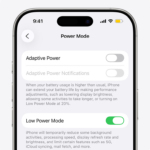Selecting the right storage capacity for a MacBook is crucial as it can greatly affect both performance and convenience. Apple’s range of MacBooks offers various storage options, beginning at 256GB and extending up to an impressive 8TB for higher-end models. The choice depends heavily on the user’s requirements; professionals who handle large video files or extensive software libraries might need more space than someone using their MacBook for general web browsing and document creation. It is important to assess individual needs carefully because upgrading storage after purchase can be challenging and potentially warranty-voiding.
Each MacBook model comes with solid-state drive (SSD) storage, which delivers fast data access speeds for a smoother user experience. However, these SSDs come with a significant cost premium, especially as capacity increases. Casual users typically find 256GB to 512GB sufficient, but those involved in more storage-intensive work should consider opting for at least 1TB. Managing storage with MacOS’s built-in tools can also help extend the life of the MacBook’s SSD by optimizing space and keeping unnecessary files from consuming valuable storage room.
When choosing a MacBook, it’s essential to plan ahead for future needs. MacOS and applications receive regular updates that can increase storage demands over time. Thus, opting for more storage at the outset may provide better value and user experience in the long run, avoiding potential disruptions or the need for external storage solutions.
When buying a new MacBook, one of the most important choices is storage capacity. Unlike RAM or CPU, storage isn’t easily upgraded later—so it’s worth getting it right from the start.
MacBooks in 2025 typically start at 256GB SSD and can be configured up to 8TB (on MacBook Pro models). But not everyone needs that much space.
Key Factors to Consider
- Type of User – Student, professional, creative, or casual.
- File Types – Do you mostly store documents, or large video/photo libraries?
- Cloud Usage – If you rely on iCloud, Google Drive, or Dropbox, you may need less local storage.
- Future-Proofing – macOS updates and apps take more space over time.
Recommended Storage Sizes
| User Type | Typical Usage | Recommended Storage |
|---|---|---|
| Casual / Student | Web browsing, email, Office/iWork, streaming, light photo storage. | 256GB–512GB |
| General User | Mix of productivity apps, light media editing, moderate photo/music library. | 512GB–1TB |
| Professional | Running multiple apps, larger files, some video/photo editing. | 1TB–2TB |
| Creative / Power User | 4K/8K video editing, large design projects, music production, coding VMs. | 2TB–4TB+ |
| Enterprise / Niche | Specialized workflows (film production, scientific data, huge libraries). | 4TB–8TB |
Practical Tips
- OS & Apps Overhead: macOS + essential apps take up ~30–50GB right away.
- Cloud Syncing: If you use iCloud Drive or Google Drive, you can “offload” files, but you’ll still need enough space for local work.
- Longevity: If you plan to keep your MacBook for 4–6 years, aim for at least 512GB to avoid running out of space.
- External Drives: For large media libraries, an external SSD or NAS can be a cost-effective supplement.
✅ Quick Answer:
- Students & casual users: 256GB–512GB
- Most professionals: 512GB–1TB
- Creators & power users: 1TB–4TB+
Key Takeaways
- MacBook storage options start at 256GB, with larger capacities available for more intensive use.
- SSDs in MacBooks enhance performance but add to the cost, influencing the choice of storage size.
- Planning for current and future storage needs helps avoid disruptions and extra costs later on.
Determining Storage Needs
Choosing the right amount of storage for a MacBook involves understanding the various options and how they relate to your needs. This section breaks down the key factors to consider.
Understanding Storage Capacities
MacBooks come with a range of SSD storage options starting from 128GB to a massive 8TB. Here’s what each capacity means for users:
- 128GB: Suitable for basic tasks such as browsing and document creation.
- 256GB and 512GB: Fit for more extensive app use and media storage.
- 1TB and 2TB: Offer space for large video files and extensive photo collections.
- 4TB and 8TB: Cater to professionals with heavy data requirements.
Analyzing Usage Patterns
Look at your current use. How much space do your apps and files take? Remember, your future MacBook may need more room as apps and files grow in size. Users with simple needs might manage with 256GB, but those with larger media libraries or who work with videos and photos may require 1TB or more.
Types of Files and Their Sizes
Different files consume different amounts of storage:
- Documents: Usually small, a few kilobytes (KB) to megabytes (MB).
- Photos: Averaging 2-5MB per image, depending on quality.
- Music: Typically 3-10MB per song.
- Videos: Can use 1GB per hour for SD content, more for HD and 4K.
Future-Proofing Your MacBook
Consider how long you intend to keep your MacBook. As software grows and file sizes increase, what works today may not suffice in a few years. Users should consider at least 512GB to stay comfortable over time, especially since storage can’t be upgraded easily post-purchase.
Storage Management and Expansion Options
When choosing a MacBook, understanding how to manage and potentially increase its storage is crucial. These techniques help ensure that a MacBook performs well while adapting to changing storage needs.
Optimizing Internal Storage
Users can keep their Mac’s internal storage running efficiently by regularly checking the storage section under System Settings. It’s advisable to clean up files and apps that are no longer used. By enabling settings like “Optimize Storage,” MacBooks can store less-used files in iCloud, making room for new data.
External Storage Solutions
Adding an external drive is a direct way to expand a MacBook’s storage. Modern Mac models support connections to external SSDs or hard drives, providing a quick boost in space. Compact and lightweight, these drives can significantly extend the storage of MacBooks without compromising on performance.
Cloud Storage Services
iCloud offers a seamless way to store documents, photos, and more in the cloud. With it, you can access files across multiple Apple devices, like the iPhone, iPad, or a different Mac. Other cloud services offer additional or specialized storage options and can serve as a backup or extra storage tier.
Upgrading Your MacBook’s Storage
The non-user-upgradable nature of most new MacBook Air and MacBook Pro models means storage capacity decisions are important at the point of purchase. The Mac mini and Mac Studio offer more flexibility, with some models providing options to upgrade their internal SSDs after purchase.







